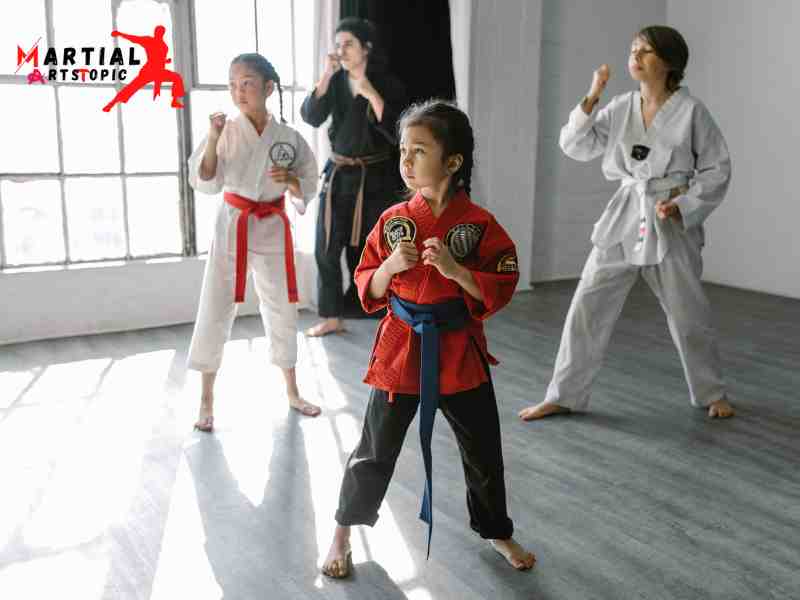
Definition of Martial Arts
The Definition of Martial Arts: The World of Combat Sports, Martial arts have long captivated people’s imaginations, evoking images of skilled warriors engaging in intense battles. But what exactly is the definition of martial arts? In this comprehensive blog post, we will delve into the fascinating world of combat sports, exploring their origins, techniques, and cultural significance. So, tighten your belt and get ready to discover the essence of martial arts!
Martial arts, also known as combat arts, are a diverse array of traditional and modern combat sports that emphasize physical and mental discipline. These practices originated in different parts of the world, each with its unique fighting styles and philosophies. From ancient disciplines like Kung Fu and Karate to more contemporary forms such as Brazilian Jiu-Jitsu and MMA (Mixed Martial Arts), martial arts offer a wide range of techniques and approaches to combat.
One of the key aspects of martial arts is the focus on self-defense and personal development. While some may view martial arts primarily to combat, practitioners understand it goes beyond physical confrontation. It fosters discipline, respect, and self-confidence, teaching valuable life skills that extend beyond the training mat.
The techniques employed in martial arts are as diverse as the cultures they originated from. Striking arts, such as Muay Thai and Taekwondo, emphasize powerful punches, kicks, and knee strikes. Grappling arts, like Judo and Brazilian Jiu-Jitsu, focus on manipulating an opponent’s body through joint locks and submissions. Weapons-based arts, such as Kendo and Escrima, incorporate the use of various weapons in combat.
The benefits of practicing martial arts extend beyond physical fitness. Regular training enhances flexibility, strength, and coordination, improving overall athleticism. It also promotes mental clarity, stress relief, and emotional well-being. Through rigorous training, practitioners develop resilience, perseverance, and the ability to overcome challenges both on and off the training mat.
Cultural significance plays a vital role in understanding the definition of martial arts. Something deeply rooted many martial arts in the traditions and histories of their respective countries. For example, Kung Fu originated in ancient China, with each style representing a unique philosophy and fighting method. Similarly, Karate originated in Okinawa, Japan, and has since spread worldwide, becoming an Olympic sport.
Today, martial arts have gained immense popularity globally, attracting people of all ages and backgrounds. Whether it’s for self-defense, physical fitness, or personal growth, martial arts offer a holistic approach to improving one’s overall well-being. Many martial arts academies and dojos provide a welcoming environment for beginners and experienced practitioners alike, fostering a sense of community and camaraderie.
Evolution of Martial Arts
The Evolution of Martial Arts: Exploring the Definition and Rich History Martial arts have captivated individuals across the globe for centuries. From the intricate techniques to the discipline required, martial arts have developed into a revered practice that goes beyond physical combat. In this blog post, we will delve into the definition of martial arts and explore its fascinating evolution throughout history.
What is Martial Arts?
Martial arts, at its core, is a system of combat techniques and practices developed for self-defense, physical fitness, and mental discipline. While the primary purpose of martial arts is to protect oneself or others during physical altercations, it encompasses much more than just physical combat. Martial arts also promote self-discipline, mental focus, and personal growth.
The Early Origins of Martial Arts
We can trace the origins of martial arts back to ancient civilizations, where they were primarily developed for survival. In ancient China, they used martial arts of hunting and self-defense. Similarly, in ancient Egypt, depictions of combat techniques can be found on wall engravings, showing the existence of early martial arts practices.
The Evolution of Martial Arts
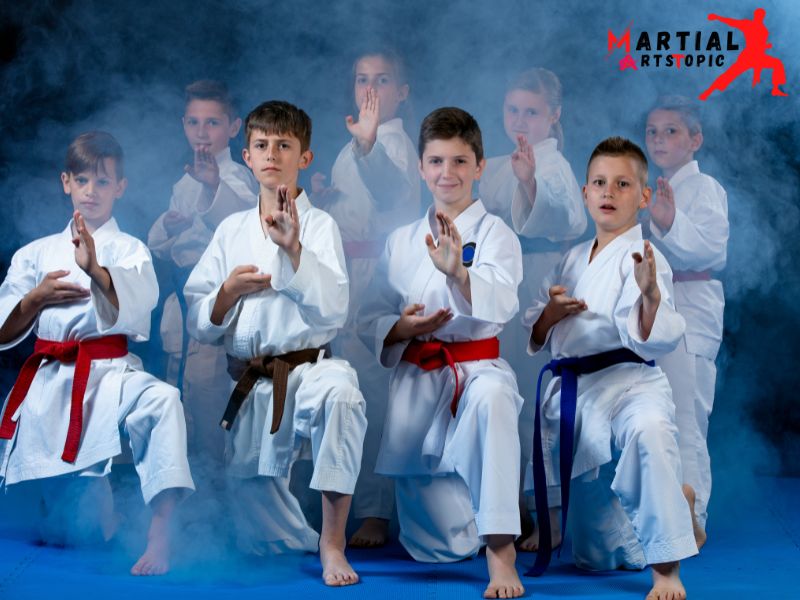
Over time, martial arts developed into distinct styles and systems across different regions of the world. In Asia, countries like China, Japan, and Korea became renowned for their unique martial arts practices. Chinese martial arts, also known as Kung Fu, emphasize fluid movements and internal energy cultivation. Japanese martial arts, such as Karate and judo, focus on striking and grappling techniques. Korean martial arts, like Taekwondo, emphasize high kicks and fast, powerful strikes.
Besides Asian martial arts, various other styles emerged in different parts of the world. Brazilian Jiu-Jitsu, for example, originated in Brazil and combines elements of Japanese Jiu-Jitsu with ground fighting techniques. Capoeira, a Brazilian martial art developed by African slaves, incorporates acrobatics and dance-like movements. These diverse styles showcase the global influence and evolution of martial arts throughout history.
The Modern Era of Martial Arts
The modern era, martial arts have become widely practiced as a competitive sport and a means of personal development. The establishment of international organizations, such as the International Olympic Committee and the International Martial Arts Federation, has further elevated the popularity and recognition of martial arts worldwide.
Today, martial arts have transcended cultural boundaries and continue to develop and adapt. Mixed Martial Arts (MMA), which combines various martial arts disciplines, has gained significant popularity and has become a global sport. MMA fighters showcase their skills and techniques in organized competitions, captivating audiences with their athleticism and combat prowess.
The Benefits of Martial Arts
Beyond the physical aspects, martial arts offer many benefits to practitioners. Regular training in martial arts improves physical fitness, coordination, and flexibility. It also promotes mental well-being, stress relief, and self-confidence. Martial arts training instills discipline, self-control, and respect, creating a positive impact on one’s character and personal growth.
The origins of martial arts in ancient civilizations (e.g., China, Japan, India).
The Origins of Martial Arts in Ancient Civilizations Martial arts, as we know them today, have a rich and fascinating history that dates back thousands of years. From the ancient civilizations of China, Japan, and India, we can trace the roots of martial arts to their earliest beginnings. In this blog post, we will delve into the origins of martial arts in these ancient cultures, exploring their development, significance, and enduring legacy.
China: The Birthplace of Martial Arts
It widely regarded China as the birthplace of martial arts, with a history that spans over 4,000 years. Ancient Chinese civilizations developed various forms of combat techniques as a means of self-defense and military training. These early martial arts systems laid the foundation for what would later become codified and organized styles.
One of the most influential martial arts in China is Kung Fu, which encompasses a wide range of fighting styles, including Shaolin Kung Fu, Wing Chun, and Tai Chi. These styles emphasize fluid movements, balance, and the harmonious integration of mind, body, and spirit.
Japan: The Way of the Samurai
In ancient Japan, we deeply intertwined martial arts with the samurai warrior class. Known as Bushido, the way of the warrior, martial arts played a crucial role in the samurai’s training and code of conduct. The most well-known Japanese martial art is undoubtedly Karate, which originated from Okinawa and was later developed and refined in mainland Japan.
Karate focuses on striking techniques, such as punches, kicks, and knee strikes, and places great emphasis on discipline, respect, and self-control. Other prominent Japanese martial arts include Judo, Aikido, and Kendo, each with its unique philosophy and techniques.
India: The Birthplace of Meditation and Combat
While India is often associated with its rich spiritual traditions, it is also the birthplace of various martial arts forms. Ancient Indian civilizations developed combat techniques known as Kalaripayattu, which are believed to be the precursor to many Southeast Asia martial arts.
Kalaripayattu incorporates strikes, kicks, grappling, and weaponry, and places a strong emphasis on flexibility, agility, and physical conditioning. It also integrates elements of meditation and yoga, making it a holistic practice for both physical and mental well-being.
The Enduring Legacy of Martial Arts
Throughout history, martial arts have not only served as a means of self-defense but also to cultivate discipline, focus, and personal growth. From the battlefields of ancient China to the training halls of medieval Japan and the spiritual retreats of India, martial arts have evolved and adapted, leaving a lasting impact on cultures around the world.
Today, martial arts continue to thrive, with millions of practitioners worldwide. Beyond physical fitness and self-defense, martial arts provide a pathway to self-discovery and personal transformation. Whether you are practicing Karate, Kung Fu, or any other martial art, the benefits extend far beyond the dojo or training mat.
Key Components of Martial Arts
Key Components of Martial Arts:Martial arts, also known as the art of war, encompass an array of combat practices that originated in ancient civilizations and continue to be practiced today. The key components of martial arts revolve around discipline, technique, and physical fitness. Discipline plays a crucial role as practitioners are required to adhere to strict principles and codes of conduct. Technique entails mastering various forms of strikes, kicks, blocks, and grappling moves. Last, physical fitness is of utmost importance, as martial artists must possess strength, agility, and endurance to excel in their chosen discipline. Martial arts are a comprehensive system that combines self-defense, mental focus, and physical conditioning for personal growth and mastery.
Techniques and Movements
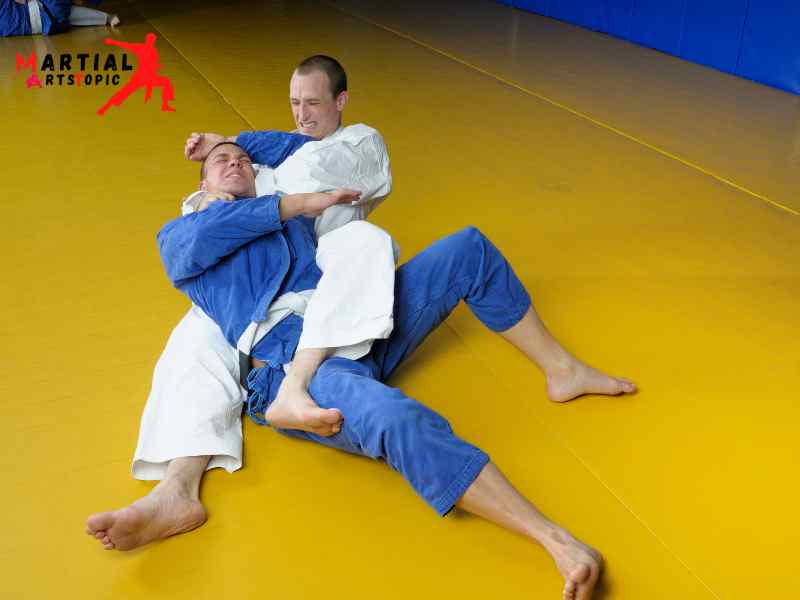
Techniques and movements are integral aspects of martial arts, encompassing a wide range of skills and abilities. Martial arts involve the practice and application of various combat techniques, including striking, grappling, and self-defense maneuvers. They often rooted these techniques in ancient traditions and philosophies, with practitioners honing their physical and mental prowess through rigorous training. Whether it’s the precise strikes of karate or the fluid movements of kung fu, martial arts offer individuals a means of self-expression, discipline, and personal growth. By mastering these techniques, martial artists develop heightened awareness, agility, and strength, enabling them to effectively defend themselves and others.
Explain the various techniques used in martial arts, such as strikes, kicks, blocks, and throws.
Martial arts have been practiced and revered for centuries, and their techniques continue to captivate and inspire people around the world. The art of combat is not just about brute force or aggression; it requires discipline, focus, and a deep understanding of various techniques. In this blog post, we will delve into the world of martial arts and explore the different techniques used, including strikes, kicks, blocks, and throws.Before we dive into the techniques, let’s first understand what martial arts truly mean. Martial arts is a broad term encompassing various traditional and modern combat practices. It is not only about self-defense but also about self-discipline, physical fitness, and mental strength. Martial arts practitioners strive for personal growth, harmony, and respect for oneself and others.
Now, let’s explore the different techniques that make up the essence of martial arts.
- Strikes: Strikes are the foundation of martial arts. They involve the precise and controlled use of punches, elbows, knees, and open-hand techniques to deliver forceful blows to an opponent. Strikes can be aimed at different parts of the body, such as the head, torso, or limbs, and can be used to both disable an opponent and create opportunities for further attacks.
- Kicks: Kicks are powerful techniques that use the lower limbs to strike an opponent. They require flexibility, balance, and precise timing. They can execute kicks with the feet, knees, or shins, and can target various areas, such as the head, chest, or legs. Different martial arts styles have their own unique kicking techniques, ranging from high, fast spinning kicks to low, sweeping leg strikes.
- Blocks: Blocks are defensive techniques used to intercept or redirect an opponent’s strikes. They involve using the arms, legs, or other parts of the body to prevent or minimize the impact of an attack. Blocks require quick reflexes, coordination, and proper positioning to effectively neutralize an opponent’s strike. By mastering the art of blocking, martial artists can protect themselves while creating openings for counterattacks.
- Throws: Throws are techniques used to off-balance an opponent and take them down to the ground. They involve using leverage, body positioning, and momentum to control an opponent’s movements. Throws can be executed by manipulating an opponent’s joints or by using their own energy against them. Throws not only immobilize an opponent but also provide a helpful position for follow-up attacks or submissions.
Each martial art style emphasizes different techniques and places varying degrees of importance on strikes, kicks, blocks, and throws. For example, the fast-paced and dynamic style of Taekwondo emphasizes high, explosive kicks, while the precise and flowing movements of Aikido focus on redirecting an opponent’s energy through throws and joint locks.
Mental and Emotional Discipline:
Mental and emotional discipline is a fundamental aspect of practicing martial arts. This discipline refers to the ability to maintain focus, control emotions, and stay composed in challenging situations. In martial arts, mental and emotional discipline are essential for achieving success and personal growth. It involves developing concentration, resilience, and a strong mindset. Martial arts practitioners understand that mental and emotional discipline are as important as physical strength and technique. It allows individuals to overcome obstacles, face adversity, and maintain a calm and clear mind during intense training and competitions. Ultimately, the practice of martial arts fosters mental and emotional discipline, leading to a well-rounded and balanced approach to life.
Introduce the philosophical principles that underpin many martial arts disciplines (e.g., respect, humility, honor).
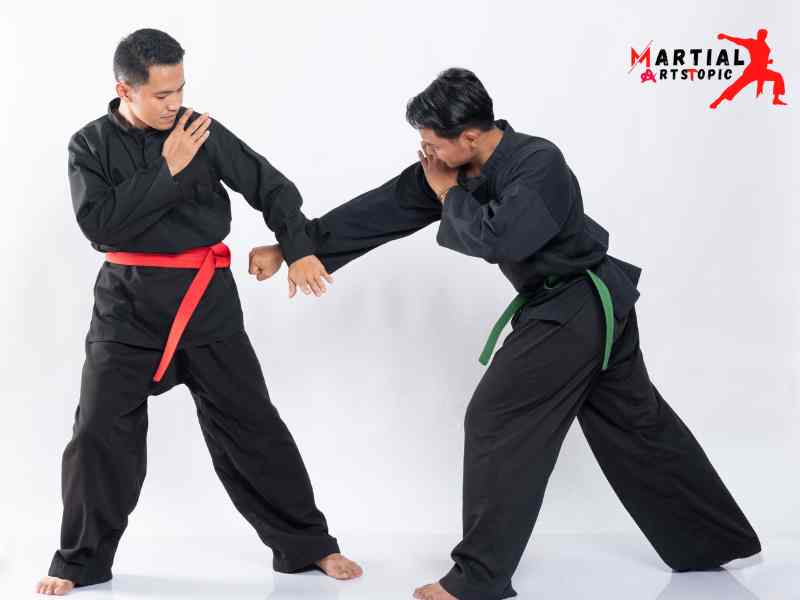
The Definition of Martial Arts: Exploring the Philosophical Principles Martial arts, a term that encompasses various disciplines and practices, has transcended its physical nature to become a way of life for many. While most people associate martial arts with combat techniques and self-defense, there is a deeper layer to this ancient practice. At its core, they ground martial arts in philosophical principles that shape the mindset and character of its practitioners.
Respect, humility, and honor are among the key philosophical principles that underpin many martial arts disciplines. These principles go beyond the physical aspects of martial arts, reflecting a holistic approach that cultivates both mental and physical strength. Let’s delve into each of these principles and understand how they contribute to the essence of martial arts.
Respect: In martial arts, respect is not limited to the bowing rituals and etiquette observed between practitioners. It goes much deeper, emphasizing the value of respect for oneself, others, and the art itself. Martial artists learn to respect their bodies, pushing themselves to their limits while also recognizing their limitations. They also learn to respect their opponents, acknowledging their skills and strengths. This principle extends to respecting the art form itself, honoring the traditions and lineage that have shaped it over centuries.
Humility: Humility is a cornerstone of martial arts philosophy. It teaches practitioners to remain humble regardless of their achievements and expertise. Martial artists understand that there is always more to learn and improve upon, no matter how accomplished they become. By embracing humility, martial artists remain open to new experiences and perspectives, continuously seeking growth and self-improvement.
Honor: Honor is a fundamental principle that guides martial artists in their actions both within and outside the training space. Martial arts emphasizes the importance of integrity and ethical conduct. We encourage practitioners to uphold a strong moral compass, treating others with fairness and honesty. They strive to be role models, displaying honor in their interactions with others and upholding the values of their chosen martial arts discipline.
It is important to note that while these philosophical principles are often associated with martial arts; they are not exclusive to it. They are universal values that can apply to various aspects of life. Many martial arts schools and instructors emphasize the transferability of these principles, encouraging their students to incorporate them into their everyday lives.
Popular Martial Arts Styles
Popular Martial Arts Styles encompass a wide range of disciplines that focus on physical combat and self-defense techniques. These styles have developed over centuries, originating from various regions around the world. We can define martial arts as a set of codified practices and traditions that aim to develop mental discipline, physical strength, and spiritual growth. From the striking techniques of Karate and Taekwondo to the grappling and submission holds of Brazilian Jiu-Jitsu and Judo, each style offers its unique approach to combat. Whether you are interested in improving your fitness, learning self-defense, or exploring a new cultural tradition, the world of martial arts has something to offer for everyone.
Provide an overview of well-known traditional martial arts styles (e.g., Karate, Kung Fu, Taekwondo).
Traditional Martial Arts Styles: A Journey into the World of Karate, Kung Fu, and Taekwondo Martial arts have been an integral part of human culture for centuries. They encompass various styles and techniques that promote self-defense, physical fitness, discipline, and mental strength. In this blog post, we will delve into the fascinating world of traditional martial arts styles such as Karate, Kung Fu, and Taekwondo, shedding light on their origins, characteristics, and significance.
Karate: The Way of the Empty Hand
Originating from Okinawa, Japan, Karate is a traditional martial art that focuses on strikes, kicks, and punches. The term “Karate” translates to “empty hand,” emphasizing the importance of using one’s body as a weapon. Karate practitioners, known as karateka, learn various self-defense techniques combined with breath control and mental focus. The discipline of Karate promotes not only physical fitness but also the development of self-confidence and respect.
Kung Fu: The Art of Skillful Effort
Kung Fu, also known as Wushu, has its roots in ancient China. This traditional martial art style encompasses a wide range of techniques, including strikes, kicks, throws, joint locks, and weapon-based combat. Kung Fu emphasizes fluid and agile movements, as well as the cultivation of internal energy, known as “Qi.” Practitioners of Kung Fu, called martial artists, engage in rigorous training, mastering both physical and mental aspects. Kung Fu is not just a martial art; it is a way of life that promotes balance, discipline, and harmony.
Taekwondo: The Way of the Foot and Fist
Originating from Korea,Taekwondo is a martial art that focuses primarily on high kicks, fast punches, and jumping and spinning kicks. The name “Taekwondo” translates to “the way of the foot and fist,” highlighting the importance of leg and arm techniques. Taekwondo training emphasizes self-defense, competitive sparring, and the development of physical strength, flexibility, and agility. In addition, practitioners learn important values, such as integrity, perseverance, and self-control.
Each of these traditional martial arts styles has its unique characteristics and cultural significance. However, they share common goals of physical fitness, self-defense, and personal development. By practicing these styles, individuals can enhance their overall well-being.
The Benefits of Traditional Martial Arts
Engaging in traditional martial arts offers many benefits, both physical and mental. Regular practice helps improve cardiovascular health, muscular strength, flexibility, and balance. Martial arts training also enhances self-confidence, discipline, and focus, which can apply to various aspects of life. Traditional martial arts promote stress relief and mental well-being, allowing practitioners to develop resilience and a positive mindset.
Contemporary Martial Arts
Contemporary martial arts refer to the modern and evolved forms of combat techniques and self-defense systems that have emerged in recent times. Also known as modern martial arts, they encompass a variety of disciplines and training methods that focus on both physical and mental development. From traditional martial arts like karate and taekwondo to more modern practices like MMA (Mixed Martial Arts) and Krav Maga, contemporary martial arts provide individuals with effective means of self-defense while promoting fitness, discipline, and personal growth. These dynamic combat systems have gained popularity worldwide because of their emphasis on practical techniques and their ability to adapt to real-life situations.
Explore modern martial arts disciplines, such as Brazilian Jiu-Jitsu, Mixed Martial Arts (MMA), and Krav Maga.
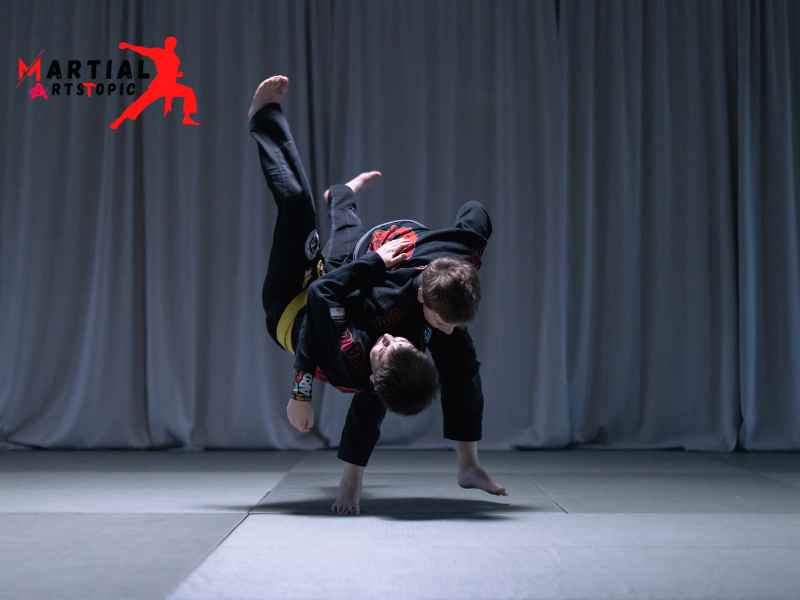
Explore the World of Modern Martial Arts Disciplines: Brazilian Jiu-Jitsu, MMA, and Krav Maga Martial. We have practiced arts for centuries, developing and adapting to different cultures and time periods. Today, we will inspect some of the most popular and effective modern martial arts disciplines: Brazilian Jiu-Jitsu, Mixed Martial Arts (MMA), and Krav Maga. These disciplines have gained significant recognition and following because of their practicality, effectiveness, and physical and mental benefits.
Brazilian Jiu-Jitsu: Unlocking the Power of Technique
Brazilian Jiu-Jitsu (BJJ) originated from the traditional Japanese martial art of Judo, but it has developed into a unique and highly effective grappling discipline. BJJ focuses on ground fighting and submissions, allowing a smaller and weaker individual to defend themselves against larger opponents. The essence of BJJ lies in technique, leverage, and body mechanics rather than relying solely on brute strength. It has become a vital component in the training of many MMA fighters because of its effectiveness in close-quarter combat.
Mixed Martial Arts (MMA): The Ultimate Test of Skill and Versatility
MMA is a full-contact combat sport that combines different martial arts disciplines, including striking and grappling techniques. It has gained massive popularity in recent years, with the rise of promotions like the Ultimate Fighting Championship (UFC). We train MMA fighters in multiple disciplines, including Brazilian Jiu-Jitsu, Muay Thai, wrestling, boxing, and more. This comprehensive training allows them to adapt to various fighting scenarios and become well-rounded athletes. MMA tests both the physical and mental capabilities of its practitioners, making it one of the most challenging and exciting martial arts disciplines to explore.
Krav Maga: Self-Defense for Real-Life Situations
Krav Maga, meaning “contact combat” in Hebrew, is a modern self-defense system developed for the Israeli military. Unlike traditional martial arts, Krav Maga focuses on real-life situations and practical techniques that can be applied in self-defense scenarios. It emphasizes efficiency, aggression, and quick reflexes, making it suitable for individuals of all ages and fitness levels. Krav Maga techniques incorporate strikes, kicks, grappling, and defenses against various armed and unarmed attacks. Its simplicity and effectiveness have made it a popular choice for law enforcement, military personnel, and civilians seeking practical self-defense skills.
In conclusion
We can Definition of Martial Arts as a comprehensive system of self-defense techniques and combat skills that originated from various cultures around the world. It encompasses a wide range of disciplines, each with its unique philosophy, principles, and training methods. Martial arts not only focus on physical techniques but also emphasize mental discipline, self-control, and respect for others. Whether practiced for self-defense, physical fitness, or personal development, martial arts offer a pathway to cultivate physical strength, mental resilience, and overall well-being. By embracing the essence of martial arts, individuals can strive to achieve harmony between the mind, body, and spirit, thereby unlocking their full potential in both martial skills and in life.
